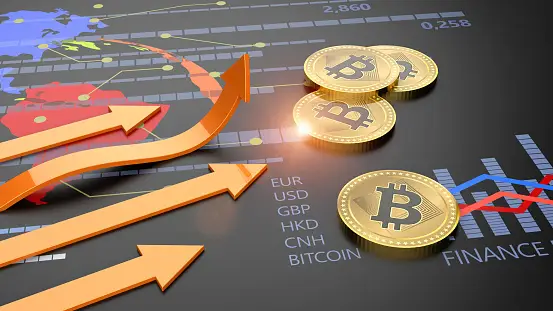Unlocking the Secrets: Why Reading a Crypto Exchange Fee Schedule Saves You Money
Ever wonder why smart traders spend so much time on fee schedules? The importance of reading the fee schedule before using a crypto exchange cannot be overstated. You might ignore it, thinking it’s just another tedious list. But here’s the truth – that dull document holds the key to cutting costs and boosting your trading gains. Each line, each percentage has the power to eat into your profits or leave them intact. Look at it this way: stay clueless, lose money; get informed, save big. Sounds better, right? Stick around as I take you through the maze of fees and show you how to keep more coin in your pocket. Let’s dig into the numbers and shatter the mystery of crypto exchange fees. Trust me, your wallet will thank you.
Unlocking the Secrets: Why Reading a Crypto Exchange Fee Schedule Saves You Money
Decoding Cryptocurrency Fee Structures
Let’s talk coins, and I mean the kind you keep, not spend. Understanding crypto trading costs can feel like cracking a secret code. But don’t worry. I’m here to turn you into a codebreaker.
Understanding Different Types of Exchange Fees
Every trade you make, every move you take, exchanges watch you. And they charge you. There are several types of fees in cryptocurrency exchanges. To start, “maker” and “taker” fees are common. When you set an order that doesn’t trade immediately, you’re a “maker,” and often you pay less. If your order matches and trades at once, you’re a “taker,” and typically, you pay more.
Network fees for crypto transactions are next. Say you send Bitcoin to someone. This costs money. It’s what you pay to miners who keep the network going. Remember, this fee often changes.
Some exchanges also charge crypto deposit fees or crypto withdrawal fees. Putting money in or taking it out can cost you. And these can sneak up on you, so keep an eye out.
The True Cost of Trading Cryptocurrencies
Now, trading isn’t just buy low, sell high. There’s more under the hood. Every fee chips away at your profit or adds to your loss. Crypto transaction fees lower the amount you could earn. You think you’re making a smart move, but fees can turn it upside down.
Avoiding high crypto exchange fees means more than just looking for the cheapest rates. Think about how often you trade. Lots of small trades can make fees pile up fast. If you trade less but with bigger amounts, the story’s different.
Comparing exchange rates and fees is a must. Use a cryptocurrency exchange fee comparison tool. These tools help you see which exchange lets you keep more money in your pocket.
Remember, fee schedule’s impact on trading strategy isn’t small. Sometimes, the best strategy might be to wait. Wait for lower network fees or to make fewer, larger trades.
Breaking down the fee schedule before you trade can save you a lot. It helps you make moves that make sense — and cents. Get the scoop on crypto exchange fees explained in simple terms. Know what you’re paying for each trade; then decide if your strategy needs a new spin.
You’re in the game to win. So don’t let fees eat your stash. Read the schedule, compare the costs, and trade smart. It’s like finding hidden treasure every time you avoid unnecessary charges.
And that’s the real secret —seeing beyond the lure of quick gains to the slow and steady path to holding on to your coins.
Comparing Exchange Rates and Fees
Maker vs. Taker Fees: How They Affect Your Trades
When you trade on a crypto exchange, you’ll face maker or taker fees. Maker fees apply when you add a trade to the market. Taker fees happen when you take a trade off the market. Knowing these fees can save you money.
Network and Withdrawal Fees: The Hidden Charges to Look Out For
Network fees come with each blockchain transaction. Withdrawal fees are charged by exchanges when you take out your crypto. These hidden charges can add up. It’s smart to know them before you trade.
What are maker and taker fees in crypto exchanges, and why do they matter?
Maker fees are what you pay for adding liquidity. Taker fees are for taking liquidity away. They matter because they affect how much you spend or earn from trading. In short, maker fees tend to be lower to reward those who help create a robust market by placing orders that aren’t matched immediately, adding to the order book’s depth. Taker fees are typically higher to cover the costs of removing liquidity, which can sometimes make the market thinner and less stable.
When you plan a trade, check the fee schedule. Look for the maker and taker rates. Picking the right timing and type of order can cut your costs. This is key in strategizing to keep more of your gains.
What should traders understand about network and withdrawal fees?
Network fees are the cost to process transactions on a blockchain. Withdrawal fees are what exchange charges to move your crypto to your wallet. Traders should understand that these fees can change. They vary by congestion on the network and each exchange’s policies. Sometimes it’s a flat rate other times it’s a percent of your transfer.
Reading up on these fees before you trade can prevent shock. You won’t be asking, where did my money go? Or why is my transfer less than I sent? It’s your hard-earned crypto. Check the fee schedule so you don’t lose out.
By knowing about maker versus taker fees, network charges, and withdrawal costs, you can trade smarter. You avoid nasty surprises and keep more of what you make. The key is comparing exchange rates and fees. Stay ahead, be informed, and happy trading!
Impact of Fees on Trading Strategy
How Fee Schedules Can Influence Investment Returns
Let’s talk money. Every trade eats a slice of your pie. Small, but it adds up. Nobody likes less pie, right? That’s why understanding crypto trading costs matters. Think of fee schedules as recipes. Know them well, or your pie turns out costly. Why? Because each crypto platform has its own set of rules.
Imagine this. You choose a crypto exchange. It looks great. But you skip reading the fine print. Later, you find unexpected crypto fees nibbling away at your return. Ouch. Crypto transaction fees change your gains and losses. They can be like termites in your investment’s foundation. Slow, silent, but damaging.
Crypto exchange fees explained simply: they’re the price of doing business. There are maker vs taker fees in cryptocurrency exchanges. Makers add to the market; takers take from it. Makers often pay less. It rewards patience and strategy. Fees for makers and takers differ, affecting your returns.
Now you’re thinking, “Okay, but what can I do?” Start by comparing exchange rates and fees. It’s like shopping for the best deal. Some offer lower crypto withdrawal fees, while others have better rates for makers. Look for fee schedule transparency in crypto exchanges.
Employing Cost-Effective Crypto Trading Practices
Trading smart means trading cost-effective. Not all platforms are equal when you dig into the fees. It’s not just about finding the lowest fee, though that’s important. It’s about matching the fee schedule to your trading strategy. Are you a fast-paced day trader or a long-haul investor? Each style suits different fee structures.
Avoiding high crypto exchange fees is not just about the upfront cost. Look at the types of fees in cryptocurrency exchanges. Network fees for crypto transactions depend on the blockchain, while the exchange sets trading fees. Both can hit your profit. Fixed fees for crypto exchange services are predictable, which can help with planning. Variable fees in crypto trading… not so much.
Hidden costs in crypto exchanges? Yes, they’re real. Think of deposit and withdrawal fees and minimum balance penalties. It’s like a game where you need the best gear to win, but each piece has a cost. Minimizing crypto trading expenses is like picking the right gear; it’s strategic.
Why read the crypto fee policy, you ask? Knowledge is power. It helps avoid traps. Knowing crypto deposit and withdrawal fees, you can plan when and how much to move. This keeps more money in your pocket, for more trading, more investing, more pie.
So, dive into that fee schedule. Dig deep. Looking at the cryptocurrency exchange fee comparison is worth your time. It tells you where your money goes. And when you grasp it, you spot opportunities. Low fees can bring arbitrage chances. Buy low here, sell high there, pocket the difference. Simple.
Remember, the cost of trading cryptocurrencies shouldn’t surprise you. Fees might seem small, but they’re like bees. One is okay, a swarm? That hurts. Analyze fees for each trade. And always keep an eye out for those sneaky extra charges. By learning the fee rules, you play the game better. And that means more wins for your wallet.
Navigating Fee Schedules for Smarter Decisions
Seeking Fee Schedule Transparency and Avoiding Pitfalls
Look, fees eat into your cash. That’s true for banks, and it’s true for crypto exchanges. Even tiny fees add up. They can turn a good day into a “just okay” day. Or a bad day into a worse one. So knowing what you’re up against is key. Reading a crypto exchange’s fee schedule before you dive in can save you real money.
Why read crypto fee policy, you ask? Simple. It’s about keeping more coins in your pocket. Crypto exchanges all have their own rules. Some charge you for taking offers from others, that’s a “taker” fee. Others charge less if you’re the one making offers, called a “maker” fee. Some might even sneak in fees that you didn’t expect. That’s why understanding crypto trading costs is so important.
Digging into the cryptocurrency fee structure takes time, but it’s worth it. You could just jump in and trade, but imagine later finding out there was a cheaper path you missed. That’s the kind of thing that keeps me up at night.
Analyzing Fees for Arbitrage and Other Trading Opportunities
Now let’s talk about using knowledge to your advantage. If you’re keen on arbitrage, knowing fees is your bread and butter. It means buying low on one platform and selling high on another. Sounds easy, right? But here’s the trick. If you don’t account for those sneaky fees, you might end up not making any profit at all.
Fees can be like icebergs. What you see upfront is just the tip. The real bulk hides below the surface. Hidden charges in crypto platforms can pop up as withdrawal fees or network fees. Sometimes, even deposit fees. So if you don’t look carefully, what looks like a smart move could end up costing you.
Comparing exchange rates and fees is like being your own financial detective. You’re looking for the best deal, and sometimes the devil’s in the details. Crypto transaction fees change often. They vary from one exchange to another. They can be flat rates or percentages of your trade. So the cost of trading cryptocurrencies isn’t always straightforward.
Exchange fees and investment returns go hand-in-hand. If fees are high, your potential profit drops. That’s the simple truth. You can avoid high crypto exchange fees by doing your homework. Look at types of fees in cryptocurrency exchanges. See which have fixed fees, which have variable ones. Find out when you get charged for what. Trust me, your wallet will thank you.
In short, keep those eyes peeled for fee schedule transparency in crypto exchanges. It’s the smart traders who read the fine print and ask the hard questions. They find the fee schedules that work in their favor. They make informed choices and avoid traps that others fall into. So, become your own fee guru—it pays off in the end.
We’ve walked through the maze of crypto exchange fees together. First, we found out that reading up on fee schedules can save us cash. We looked at the different types of fees and the real cost of trading crypto. Remember, not all exchanges are the same; some have sneaky charges that can bite into your wallet.
We compared how maker and taker fees can change your trade costs. Plus, we learned about network and withdrawal fees – those extra costs that can surprise you. Keep an eye on them!
Next, we saw that fees can shape how we trade. They can eat into your investment returns if you’re not careful. So, we discussed how to trade smart and keep more of your money.
Last, we talked about using the fee schedules to make better choices. We checked how clear info on fees can help us avoid traps. It can even open doors to new chances like arbitrage.
So, stay sharp and use this knowledge. It can lead to smarter trades and more money in your pocket. Keep learning, and keep trading smart!
Q&A :
Why is it crucial to understand the fee schedule before trading on a cryptocurrency exchange?
Reading the fee schedule of a crypto exchange is critical as it outlines the costs associated with trading, including fees for buying, selling, withdrawing, and transferring assets. Understanding these fees is essential for effective cost management and to avoid any surprises that could eat into investment returns.
How can the fee schedule of a crypto exchange impact your trading strategy?
The fee schedule of a cryptocurrency exchange can significantly affect your trading strategy as it directly impacts your potential profit and loss. High fees may require you to adapt your strategy to include the costs or to seek exchanges with more favorable fee structures. Strategic considerations might include the frequency of trades and the size of transactions in light of the fees.
What types of fees are typically included in a crypto exchange’s fee schedule?
A typical fee schedule on a crypto exchange may include several types of fees such as trading fees (maker/taker fees), deposit and withdrawal fees, and sometimes fees associated with using certain payment methods or for accessing premium features. Each exchange has unique pricing, which should be understood before engaging in trading activities.
Are there ways to reduce or avoid certain fees on crypto exchanges?
Yes, some strategies to reduce or avoid fees include using limit orders instead of market orders, maintaining a certain account balance to qualify for lower fees, participating in exchange loyalty programs, or choosing payment methods with lower transaction costs. It’s important to read each exchange’s fee schedule closely to understand all available options.
Do all crypto exchanges have similar fee schedules?
No, fee schedules can vary widely between different crypto exchanges. Factors such as the exchange’s operating costs, market positioning, and target user base can influence fee structures. Users should compare fee schedules across various platforms to find the most cost-effective exchange that meets their trading needs.





